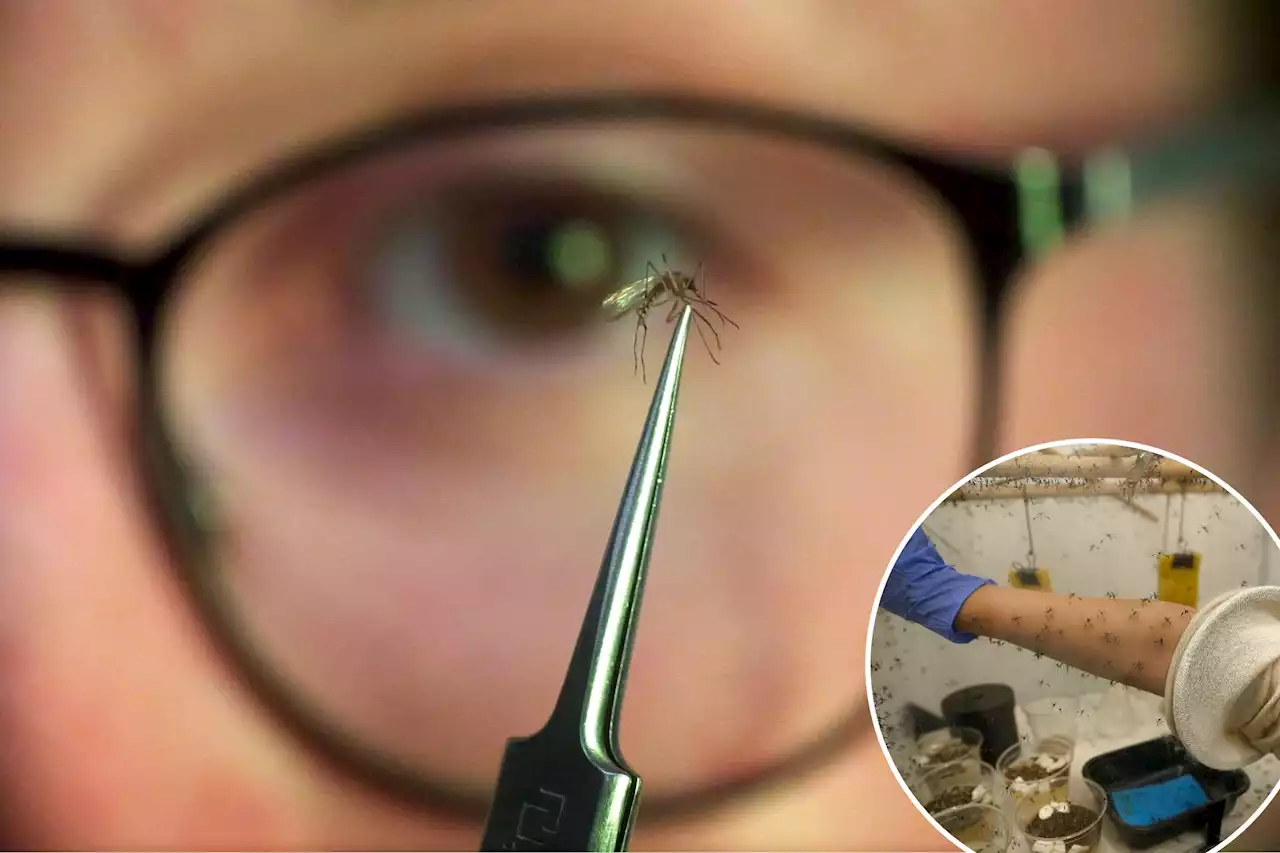Using laser light, researchers have developed the most robust method currently known to control individual qubits made of the chemical element barium. The ability to reliably control a qubit is an important achievement for realizing future functional quantum computers.
This new method, developed at the University of Waterloo's Institute for Quantum Computing , uses a small glass waveguide to separate laser beams and focus them four microns apart, about four-hundredths of the width of a single human hair. The precision and extent to which each focused laser beam on its target qubit can be controlled in parallel is unmatched by previous research.
"Our design limits the amount of crosstalk–the amount of light falling on neighboring ions–to the very small relative intensity of 0.01%, which is among the best in the quantum community," said Dr. K. Rajibul Islam, a professor at IQC and Waterloo's Department of Physics and Astronomy."Unlike previous methods to create agile controls over individual ions, the fiber-based modulators do not affect each other.
"This means we can talk to any ion without affecting its neighbors while also retaining the capability to control each individual ion to the maximum possible extent. This is the most flexible ion qubit control system with this high precision that we know of anywhere, in both academia and industry." The researchers targeted barium ions, which are becoming increasingly popular in the field of trapped ion quantum computation. Barium ions have convenient energy states that can be used as the zero and one levels of aand be manipulated with visible green light, unlike the higher energy ultraviolet light needed for other atom types for the same manipulation. This allows the researchers to use commercially available optical technologies that are not available for ultraviolet wavelengths.
The researchers created a waveguide chip that divides a single laser beam into 16 different channels of light. Each channel is then directed into individual optical fiber-based modulators which independently provide agile control over each laser beam's intensity, frequency, and phase. The
Brasil Últimas Notícias, Brasil Manchetes
Similar News:Você também pode ler notícias semelhantes a esta que coletamos de outras fontes de notícias.
 Researchers unlock Sweet Annie's cancer-fighting potentialArtemisia annua has been revered in traditional Chinese medicine for over 2,000 years, particularly for producing artemisinin.
Researchers unlock Sweet Annie's cancer-fighting potentialArtemisia annua has been revered in traditional Chinese medicine for over 2,000 years, particularly for producing artemisinin.
Consulte Mais informação »
 Mosquitoes feed on researchers’ blood as scientists research methods of controlAt the Salt Lake City Mosquito Abatement District, a colony of sabethes cyaneus get their nutrients from a vector technician’s arm.
Mosquitoes feed on researchers’ blood as scientists research methods of controlAt the Salt Lake City Mosquito Abatement District, a colony of sabethes cyaneus get their nutrients from a vector technician’s arm.
Consulte Mais informação »
 Utah data helps researchers highlight how urbanization impacts wildlifeNorth American cities, including the Salt Lake City area, are getting warmer, and researchers warn the heat is making it more difficult for native wildlife to adjust to the growing urbanization near their homes.
Utah data helps researchers highlight how urbanization impacts wildlifeNorth American cities, including the Salt Lake City area, are getting warmer, and researchers warn the heat is making it more difficult for native wildlife to adjust to the growing urbanization near their homes.
Consulte Mais informação »
 Researchers create optical device that can kill pathogens on surfaces while remaining safe for humansWhile it has long been known that ultraviolet (UV) light can help kill disease-causing pathogens, the COVID-19 pandemic has put a spotlight on how these technologies can rid environments of germs. However, the excimer lamps and LEDs that can directly emit light in the required deep-UV wavelengths generally have low efficiency or suffer from short lifetimes. Moreover, UV light of the wrong wavelength can actually be harmful to human cells.
Researchers create optical device that can kill pathogens on surfaces while remaining safe for humansWhile it has long been known that ultraviolet (UV) light can help kill disease-causing pathogens, the COVID-19 pandemic has put a spotlight on how these technologies can rid environments of germs. However, the excimer lamps and LEDs that can directly emit light in the required deep-UV wavelengths generally have low efficiency or suffer from short lifetimes. Moreover, UV light of the wrong wavelength can actually be harmful to human cells.
Consulte Mais informação »
 Researchers improve efficiency in carbon dioxide electroreductionResearchers from the Institute of Process Engineering (IPE) of the Chinese Academy of Sciences and Yanshan University have proposed a strategy for boosting the CO faradaic efficiency in electrocatalytic CO2 reduction reaction (eCO2RR), an attractive option to address serious climate concerns and produce value-added chemical feedstock via coupling with renewable energies. The strategy is promising in producing CO via eCO2RR at ambient conditions.
Researchers improve efficiency in carbon dioxide electroreductionResearchers from the Institute of Process Engineering (IPE) of the Chinese Academy of Sciences and Yanshan University have proposed a strategy for boosting the CO faradaic efficiency in electrocatalytic CO2 reduction reaction (eCO2RR), an attractive option to address serious climate concerns and produce value-added chemical feedstock via coupling with renewable energies. The strategy is promising in producing CO via eCO2RR at ambient conditions.
Consulte Mais informação »
 UNF researcher awarded grant to help save our coral reefsA team of researchers were recently awarded a National Science Foundation Integrative Biology program grant.
UNF researcher awarded grant to help save our coral reefsA team of researchers were recently awarded a National Science Foundation Integrative Biology program grant.
Consulte Mais informação »
